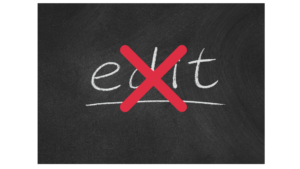Table of Contents
New California Wildcard Exemption: the Ultimate Guide (2024)
What to know about California Wild Card Exemption and the Current Amount
California wildcard exemption is big for bankruptcy lawyers protecting their clients’ assets. Here’s the ultimate guide on the new updated California wild card exemption amount, and how to figure it.
California Exemptions, generally
In bankruptcy, each state has their own exemptions, or ways they allow debtors to protect some or all of their property. California has opted out of the federal exemptions, and has it’s own passed by our legislature. This is where the California wild card exemption fits in.
Chapter 7 bankruptcy can take your unprotected assets. California has two sets of ways of protecting stuff in bankruptcy called exemptions: the 703s and 704s. The California wildcard exemption is in the 703s, and Calif homestead exemption is in the 704s. The 704s has a great way to provide protection for houses that are residences, called the California homestead exemption, which is based, in part, on the median price of the county of the home. And here’s a key point which many miss: you can’t mix and match.
The other set doesn’t have a specific way of protecting homes, but has a catchall bucket that can be used for anything the debtor owns or may own in the future. This is what we call the California wildcard exemption.
California Wild Card Exemption Found in Calif Civil Code 703.140 (CCP)
The official text for the wildcard is found in California Civil Code (CCP) 703.140. It’s specifically found in subsections (b)(1) and (b)(5) of any one of the websites that present statutes. Yes, the California wild card exemption is really a combination of two subsections, none of which use the word or phrase wild card.
(b)(1): The debtor’s aggregate interest, not to exceed twenty-nine thousand two hundred seventy-five dollars ($29,275) in value, in real property or personal property that the debtor or a dependent of the debtor uses as a residence, in a cooperative that owns property that the debtor or a dependent of the debtor uses as a residence.
(b)(5): The debtor’s aggregate interest, not to exceed one thousand five hundred fifty dollars ($1,550) in value, plus any unused amount of the exemption provided under paragraph (1), in any property.
This seems straightforward, as $29,275+$1,550 equals $30,825. And as of this writing in 2023, these are the same figures reported on multiple authoritative websites on CCP 703.140, including that of the state legislature. So it seems that everyone agrees on the California wildcard exemption amount.
And they’re wrong and outdated.

Adjusting the California wildcard exemption every 3 years
The problem is — and the good thing is — many of California exemptions adjust for inflation every three years. Section CCP 703.150(e) of the Calif Civ Pro Code says: “The Judicial Council shall determine the amount of the adjustment based on the change in the annual California Consumer Price Index for All Urban Consumers, published by the Department of Industrial Relations, Division of Labor Statistics, for the most recent three-year period ending on December 31 preceding the adjustment, with each adjusted amount rounded to the nearest twenty-five dollars ($25).”
The California wild card exemption amounts adjusted most recently on April 1, 2022, for the three-year interval ending March 31, 2022. Continuing to CCP 703.150(f): Judicial Council shall publish a list of current dollar amounts of exemptions. Great, so where is the list?
Calculating the CPI-adjusted, updated California Wildcard Exemption for 2022, 2023 and 2024:
There’s this letter from the Judicial Council dated 3/30/2022 that says, “The adjusted amounts for each of the exemption amounts in section 703.740 would be calculated by increasing the individual dollar amounts by 9.123 percent with each adjusted amount rounded to the nearest $25.”
So, when we take the “old” (b)(1) number of $29275 and find 9.123% of it, the result is 2670.76, and then add that to the old number and the new number is 31945.75825, which rounded to the nearest $25 is $31950. But we’re not done and haven’t arrived with the California wildcard yet.
Then, we take the “old” (b)(5) number of 1550, and find 9.123 percent of it, and the result is 141.4065. Add that to the old number and the new (b)(5) number is 1691.4065, or rounded to the nearest $25 is 1700.
When we add the new (b)(1) exemption of $31950 to the new (b)(5) exemption of $1700, we get $33650. Therefore, the CPI-adjusted California wild card exemption amount for 2023 and 2024 through March 31, 2025 is: $33,650.
Judicial Council and Official Documents that Verify the California Wild Card Exemption Amount
This wildcard figure matches what resources have calculated and published: Courts govt website and CEB, publisher of practice manuals, and will be valid until March 31, 2025.
Note that the first linked document, EJ-156, says on the lower-left corner that it’s a form approved by the Judicial Council. As of this time in 2023, it’s not linked to on the Court’s self-help bankruptcy page.
Is it the Judicial Council published statement about the exemptions and the California wild card exemption? While it would’ve provided more clarity if “Judicial Council” were in the document’s title or heading, the EJ156 published form appears to be the closest thing available to 703.150(e)’s “Judicial Council shall publish a list of current dollar amounts of exemptions.”
If you found this helpful, please link to it.
If you’re in Los Angeles County, contact me by setting up a free Zoom consultation and let’s go over your options.






